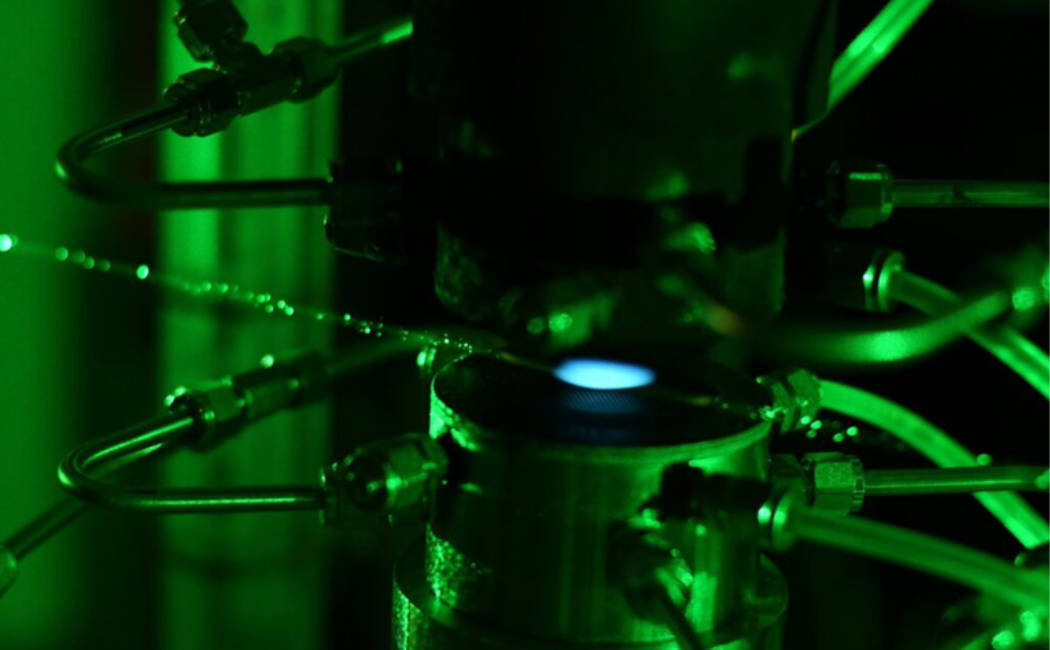

LATEST
NEWS

13 July, 2023
Laser diagnostics for electric field measurement performed on a flame under high voltage. © 2023 KAUST; Jin Park.
A burning flame is full of charged particles that can be affected by an electric field. KAUST researchers have now studied the use of high voltages to control these particles, which could potentially reduce soot formation and improve a flame’s stabilityarticle " id="return-reference-1" href="https://discovery.kaust.edu.sa/en/article/21440/k1993_freezing-the-flames/#reference-1">[1].
“Although there is no application yet, we believe that this scientific knowledge will fuel the areas of fire extinction, air and space propulsion, and even using flames in space,” says Min Suk Cha, who led the research team.
Scientists already knew that burning fuels generates electrons and ions. In recent years, the KAUST team has shown that electric fields cause these ions to flow as an “ionic wind,” which can affect the shape of the flame and the combustion process.
To better understand this phenomenon, the team developed a simulation to show how the electric field shapes the ionic wind. “Ultimately, we want to establish a comprehensive predictive tool,” says team member Jinwoo Son. The simulation included numerous factors, including the strength of the electric field, the different types of ions in the flame and their distribution.
“Potential areas include optimizing heat transfer in an efficient industrial furnace, microthrust and propulsion, fire extinction, and space utilization.”
The researchers tested these predictions by studying a flame inside a cavity exposed to electric fields of up to 2,500 volts. Methane gas entered from one side of the cavity, while oxygen entered from the opposite side, creating a band of flame in the middle.
The team measured the electric field at different points in the flame using high-power laser pulses, a method called Electric Field Induced Second Harmonic generation (EFISH). The researchers modified the EFISH technique to include a switch that could turn off the voltage in just one hundred billionths of a second. This effectively freezes the flame’s ions in time and space, so that EFISH could take an accurate snapshot of their distribution.
The experimental results largely agreed with the simulation, but there was a notable discrepancy in the local electric field close to the fuel outlet. “In that region, the experiment showed an increase in the electric field, whereas the simulation showed little change in the electric field,” says team member Jin Park.
Read more at KAUST Discovery.